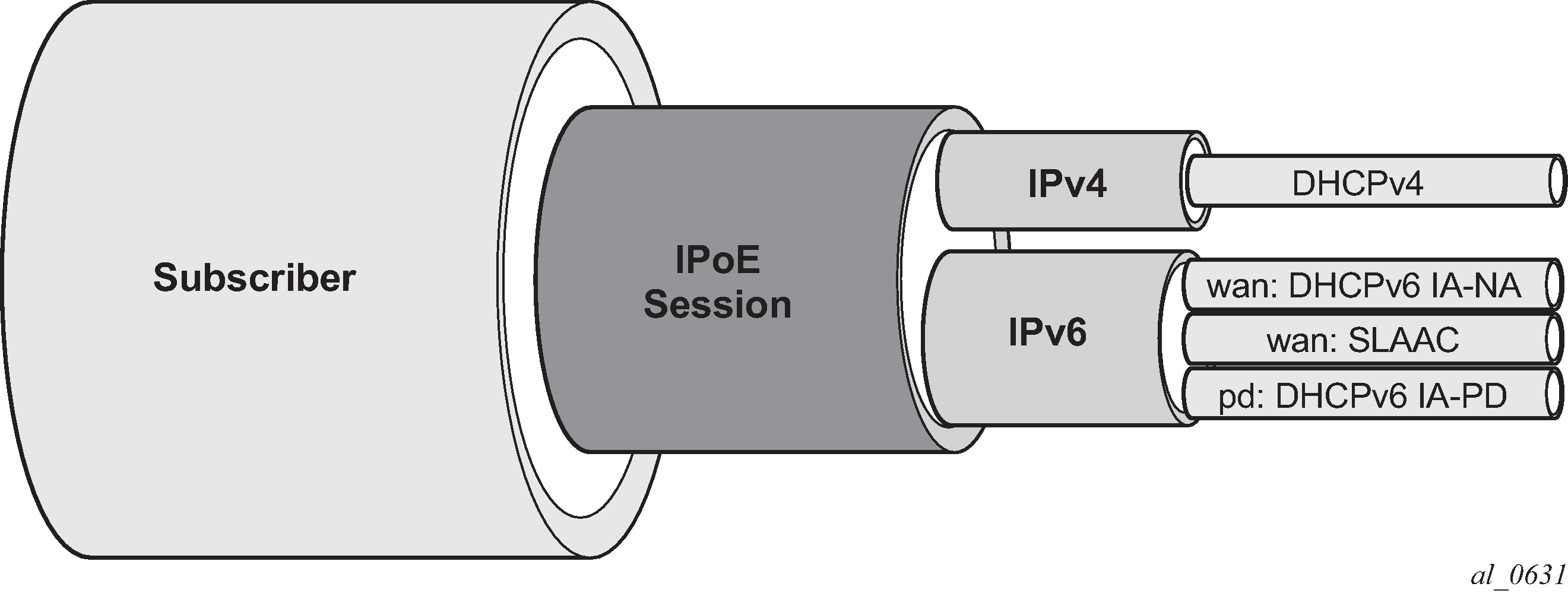The IP stacks of dual-stack IPoE devices are set up and configured independently using different protocols such as DHCPv4, DHCPv6 or SLAAC. As opposed to PPPoE, there is no single protocol that binds the IP stacks from a single end device together.
To facilitate subscriber management of dual-stack IPoE devices as a single entity similar as for PPPoE sessions instead of handling individual IPoE subscriber hosts, there is a need for a logical IPoE session construct. An IPoE session enables single authentication, session accounting and policy management (mid-session changes) for dual-stack IPoE devices.
An IPoE session is a logical grouping of IPoEv4 and IPoEv6 subscriber hosts that represent the different IP stacks of a single end device and that share authentication data such as subscriber ID, subscriber and SLA profile, session-timeout, and so on. The grouping of subscriber hosts in an IPoE session is based on a configurable session key per group-interface. The IPoE session key includes by default the SAP identifier and MAC address and can be extended with Circuit-Id/Interface-Id or Remote-Id. For DHCPv6 Remote-Id, the enterprise number is excluded from the session-key. Circuit-id/Interface-Id or Remote-id should only be used in the IPoE session key if all subscriber host associated with the IPoE session have this field in their protocol trigger packets. The IPoE session creation (Figure: IPoE session) or subscriber host association to an IPoE session fails if the Circuit-Id/Interface-Id or Remote-id is not present in a trigger packet while the field is part of the session-key.

An IPoE session represents a single end device and can have following associated IP stacks:
IPv4
A single DHCPv4 host.
IPv6 WAN
One DHCPv6 IA-NA host and one SLAAC host.
IPv6 PD
One DHCPv6 IA-PD host or PD as managed route.
A violation of the above rules results in a setup failure of the subscriber host when an attempt is made to associate it to the IPoE session.